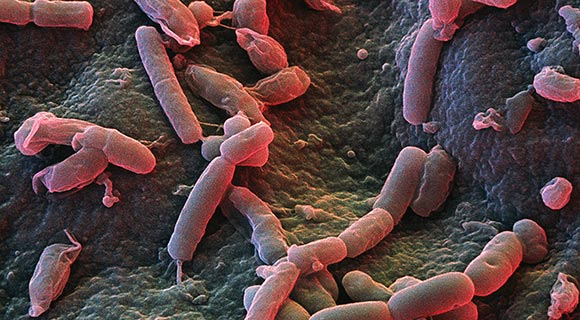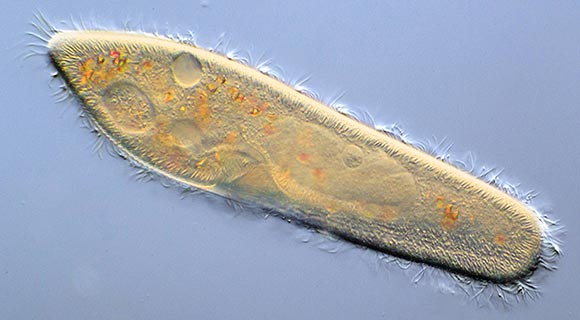Three domains
Life on earth is classified into three domains: Bacteria, Archaea and Eukarya. The first two consist completely of single-celled microbes. None of them have a nucleus. The third domain, Eukarya, consists of organisms whose cells have a nucleus. It’s also the only domain that contains multicellular and visible organisms, like people, animals, plants and trees.

Bacteria and arachaea are unicellular and lack a nucleus.
Life without a nucleus
Bacteria and Archaea seem to have a lot in common at first. The organisms in these domains don’t have a nucleus and therefore are called prokaryotes, a combination of the Greek words ‘pro’ (before) and ‘karyon’ (nut or kernel). Just as the name implies, the domain Bacteria contains bacteria. The microbes in the domain Archaea look like bacteria, but are different in a few essential ways. They often live in extreme places, like in the cold deep sea, hot geysers, or acidic volcanoes.
More complex life
The third domain, Eukarya, differs greatly from the other two. The word eukaryote stems from the Greek ‘eu’ (true) and ‘karyon’ (nut or kernel). The cells in the species of this domain, therefore, have a nucleus.

The paramecium is a unicellular eukaryote.
Eukarya is the only domain that consists of multicellular and visible organisms, like people, animals, plants and trees. It’s also the domain of many microorganisms, like fungi, algae and micro-animals. Fungi are so diverse, that two different fungi can be as genetically different as a person and a fish.
